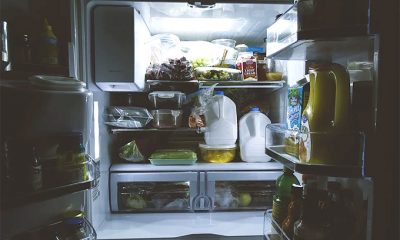In a significant leap forward for electric vehicle (EV) technology, researchers at Harvard University have unveiled a new solid-state battery that could potentially double the range of EVs. This breakthrough, which centers on a stable lithium-metal anode and a solid electrolyte, promises not only to enhance the energy density but also to reduce charging times significantly. As the automotive industry continues to push towards a more sustainable future, this development could play a pivotal role in accelerating the adoption of electric vehicles.
The Science Behind the Breakthrough
The new battery design, developed by a team at the Harvard John A. Paulson School of Engineering and Applied Sciences (SEAS), utilizes a lithium-metal anode, which is known for its high energy density. Traditional lithium-ion batteries use a graphite anode, which, while stable, has a lower energy capacity. By replacing the graphite with lithium metal, the researchers have managed to significantly increase the battery’s energy density, potentially doubling the range of EVs.One of the key challenges with lithium-metal anodes has been the formation of dendrites—tiny, needle-like structures that can grow from the anode and pierce the electrolyte, leading to short circuits and battery failure. The Harvard team has addressed this issue by developing a multi-layer, multi-material design that prevents dendrite formation, ensuring the battery’s stability and longevity. According to the researchers, this design allows the battery to retain 80% of its capacity after 6,000 charging cycles, which is equivalent to around 30 years of use in an EV (Harvard SEAS).
Faster Charging Times
In addition to increased energy density, the new solid-state battery also boasts significantly faster charging times. The researchers claim that the battery can be charged in just 10 minutes, compared to the several hours it typically takes to charge a conventional lithium-ion battery. This rapid charging capability is achieved through the use of a solid electrolyte, which allows for faster ion movement compared to the liquid electrolytes used in traditional batteries (CleanTechnica).
Environmental and Economic Impact
The development of this new battery technology could have far-reaching implications for both the environment and the economy. By doubling the range of EVs and reducing charging times, the new battery could make electric vehicles more attractive to consumers, thereby accelerating the transition away from fossil fuel-powered vehicles. This shift is crucial for reducing greenhouse gas emissions and combating climate change.Moreover, the increased energy density and longer lifespan of the new battery could help lower the overall cost of owning an EV. Currently, one of the main barriers to widespread EV adoption is the high upfront cost, largely driven by the expense of the battery. By extending the battery’s lifespan to around 30 years, the researchers hope to improve the resale value of EVs and make them more affordable for a broader range of consumers (The Guardian).
Challenges and Future Prospects
Despite the promising results, there are still several challenges that need to be addressed before the new solid-state battery can be commercialized. One of the main hurdles is scaling up the production process to meet the demands of the automotive industry. Manufacturing solid-state batteries requires high-quality materials in large volumes, and even a small amount of contaminants can render the battery ineffective. Building a robust supply chain for these materials will be crucial for the successful commercialization of the technology (Energy Monitor).Another challenge is ensuring the battery’s performance under real-world conditions. While the laboratory results are promising, the battery will need to undergo extensive testing in actual vehicles to confirm its reliability and safety. This includes ensuring that the battery can withstand the high pressures and temperature variations that occur during normal vehicle operation.
Industry Response
The automotive industry has been closely monitoring developments in solid-state battery technology, and several major players are already investing in this area. Companies like Toyota and Volkswagen have announced significant progress in their own solid-state battery research, with Toyota recently unveiling a prototype that aims to reduce the size, weight, and production costs of EV batteries (Asia Financial).Volkswagen, on the other hand, has successfully tested a solid-state battery that retains 95% of its capacity after more than 1,000 charging cycles. These advancements highlight the industry’s commitment to overcoming the technical and economic challenges associated with solid-state batteries and bringing them to market in the near future.
Conclusion
The breakthrough in solid-state battery technology by Harvard researchers represents a significant step forward in the quest for more efficient and sustainable energy storage solutions. By doubling the range of EVs and reducing charging times, this new battery design has the potential to revolutionize the automotive industry and accelerate the transition to a cleaner, greener future.However, the road to commercialization is fraught with challenges, including scaling up production and ensuring real-world performance. As the industry continues to invest in research and development, the successful deployment of solid-state batteries in electric vehicles could become a reality within the next decade. If these challenges can be overcome, the impact on the environment and the economy could be profound, paving the way for a more sustainable and energy-efficient future.For more information on the solid-state battery breakthrough, you can read the original article on Autoevolution.


 Home4 years ago
Home4 years ago
 Medical4 years ago
Medical4 years ago
 Gadgets4 years ago
Gadgets4 years ago
 Environment4 years ago
Environment4 years ago
 Medical4 years ago
Medical4 years ago
 Energy4 years ago
Energy4 years ago













